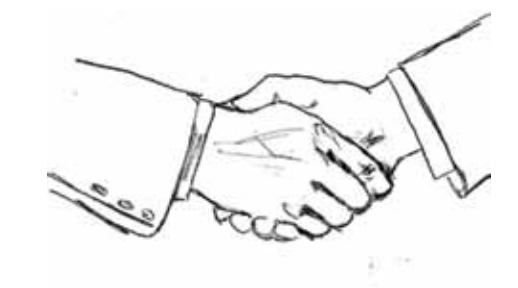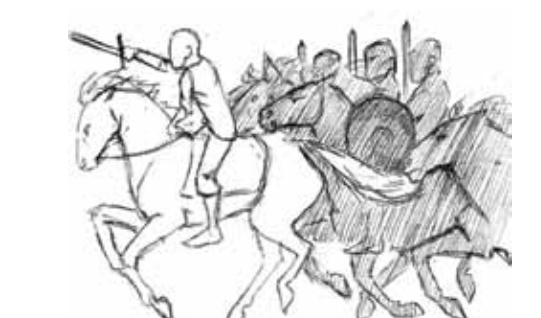It’s not just your daughter. Sadly, it’s my daughter, the majority of girls, actually, and many women too.
“Do I have to run for Student Council?” my daughter asked me.
“Of course not. I just think it would be a good experience. Why are you so hesitant?”
“Because it’s a lot of responsibility. What if I make the wrong decision and everyone blames me?!” she said.
“Honey, it’s running for Student Council, not the President of the United States…”
Why don't they want to be leaders?
McKinsey & Company, in a 2016 collaborative Women in the Workplace study with LeanIn.org, calls this problem a leadership ambition gap.
“At every stage, women are less eager than men to become a top executive. They are more likely to cite “stress/pressure” as a top issue, and this is not solely rooted in concern over balancing work and family. There is evidence pointing to another explanation—the path to leadership is disproportionately stressful for women.”
- McKinsey & Company
In addition to very real external roadblocks due to discrimination and bias, are we as a gender creating our own internal glass ceilings?
Worse, do we start to build these barriers at a very tender age?
The Girl Scouts’ Change It Up! study says “yes”.
After surveying thousands of girls across the country ages 8 to 17, they discovered that leadership stress (and the lack of desire for leadership positions) that McKinsey & Company point to, starts early.
1. The girls in the study believed an ideal leader needs to have ‘command and control’ powers. Although the girls were drawn toward ‘aspirational’ leader descriptions, saying that they would want to be a leader so they “could help others”, rather than to “want followers”, they feared being perceived as a bossy girl and put the brakes on the ambition.
2. The girls in the study seemed to have an idealized vision of what a leader is and they believed they could never measure up or attain this high standard. Out of a long list of important leadership traits which included being responsible, hardworking, confident, and a good decision-maker, the girls in the study only rated themselves strongly on “caring about others” and being “nice”. Seriously? That's it?
Apparently, when a girl looks through the lens of leadership, all they see is a fun house full of scary images.
What if the operative word here was “ideal”?
The Center for Creative Leadership (CCL) recently tried to get some clarity on what people thought an ideal leader looked like.
Their white paper, Leadership is in the Eye of the Beholder, was built upon a study done over many years by Maxwell and Greenhalgh. These two researchers asked university students to choose or create an image that best-defined leadership.
After collecting over 8,000 images, amazingly, three images kept coming to the surface: an image of two hands shaking, an image of a warrior on horseback leading a charge, and an image of a conductor.
Photo Credits: Center for Creative Leadership
The CCL wanted to know if one of these three images trumped the others. There was no clear winner. Remarkably, one-third of adults chose the handshake, one-third chose the warrior and one-third chose the conductor.
All were equally viewed as ideal leaders.
There was just one exception.
Women were far less likely to choose the image of the warrior. Only women who were executives choose the warrior equally as often as men.
They were rejecting the image of the commander and controller just like the girls!
This gave me an idea.
Would girls, inexperienced in the world, think that there was only one answer? That the warrior on horseback was the only definition of a leader? That they had to choose the warrior?
Would girls, seeing leadership mainly through the eyes of a history book, believe an idealized image of a leader is one that brazenly leads a charge with her ardent followers trailing behind?
If so, no wonder girls aren’t jumping up and down asking to be leaders…even if there IS a horse involved!
I came up with a very unscientific way to test my theory.
I tested my 12-year-old daughter.
I showed her the very same three images and I asked her to point out the image that best defined a leader.
What did she choose? You guessed it…the warrior on horseback.
Bingo.
Now for my own experiment.
I asked her if she was comfortable with the idea that she could be that kind of leader. The withering look she gave me was her emphatic answer.
I then asked her; if she could be any of these leaders, which image was she most drawn toward. She pointed to the handshake.
Exactly as I feared! My daughter was viewing leadership not by what kind of leader she WANTED to be but rather what kind of leader she thought she was SUPPOSED to be.
Could the seeds of the leadership ambition gap problem rest simply in a definition?
If you have a daughter, you should try this experiment at home with these pictures.
This was a powerful lesson for both of us and it allowed me to address two important concepts with her:
First, there are different definitions of leadership that include caring about others and being nice, along with a host of other abilities that are well within her reach.
Second, that most people usually don’t jump right out of high school and become transformational or charismatic leaders in charge of movements or nations.
Although, history class is riddled with famous leaders that led a charge (literally and figuratively), these are usually extreme examples of individuals who made such a huge impact on the world they actually made the history books. Even if there are women scattered amongst the pages, the paths that these leaders took often look intimidating.
Girls might look up to Rosa Parks but, honestly, even I feel scared by comparison imagining myself in her shoes.
My daughter did end up running for Student Council (of her own volition, I might add).
She redefined the role in her mind from being a bossy girl who would tell everyone what to do to, instead, being a conduit of good ideas and school spirit. She would be a representative of the student body to the council.
She could finally see there was a place for herself at the leadership table. She wrote her speech with enthusiasm and now I could see she wanted it badly.
She really wanted to be that “handshake”.
She won.
No horse required.
-Laura









